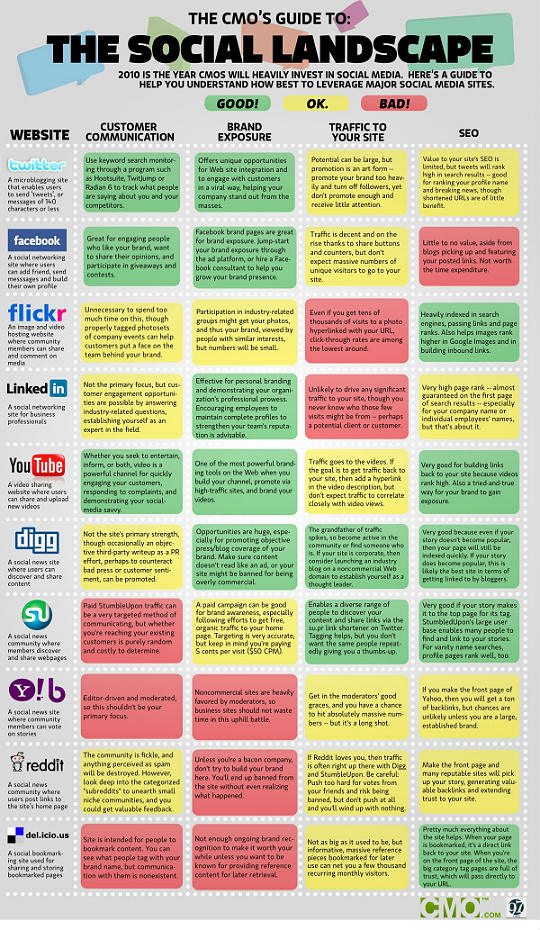Success Advice
(Video) Why Your Business Needs To Adapt To Social Media For Success

With the advent of social networking sites, these are not only used for keeping in touch with friends and family, but as a business portal as well. With over 800 million users worldwide, Facebook is one of the most popular social networking sites that have become a portal for online businesses, groups, and personalities. Read on and watch the video by Social Media expert and Millionaire Business Man Gary Vaynerchuk to find out ways you and your business can benefit from the use of Social Media.
By creating a personal account, you can post the products and services that you are selling by creating albums, and indicating the necessary information that describes your product or service. You can also choose to subscribe through their advertising links to increase user views to your profile. Another option is to create a page rather than a personal account. This way, you can showcase your products or services in a more professional manner. Bands, artists, and other types of professional make use of the Facebook page to advertise and showcase their talents, skills, services, and other information.
For a more formal approach, LinkedIn is the perfect medium for advertising your skills as a professional to potential employers. The website is also used as a job portal for those who are seeking employment online. The website works in both ways where a company or employer can post a job opening, and a potential employee or freelancer can post his or her details for other viewers to see.
Social networking sites are also an excellent media for earning money online. Many companies are providing ways for users to earn a few bucks by clicking on paid advertisements for a specified time. Advertising is also an excellent way to increase viewer traffic to your site, but it does not guarantee that people who are viewing your web site or page will actually buy your product or service. Posting links of your web page or blog can also be helpful in increasing your user views. Twitter, MySpace, and other social networking sites are good examples of where you can post links to your products and services for others to see.
Blogging is also an excellent way to earn money. There are many creative and technical writers who are making money from writing user reviews and informative content for various kinds of topics. Digg, for instance, is an online community where people share their thoughts and reviews on movies, music, and anything under the sun. It is also a good place to post links to your personal blogs, online stores, and pages for your products and services.
Multilevel marketing is also increasing in popularity when it comes to social media such as Tumblr, Twitter, MySpace, and others. With this, you will earn commission from every successful referral of the business merchant which has an advertisement on your blog or personal website. With the right tools and knowledge on internet based businesses, it is very easy to earn and be successful online.
5 Good reasons your company should be using Social Media Networks:
- A great way to keep track of your peers and colleagues
- Easy access to thought leadership or information that can’t be found elsewhere.
- A good way to showcase tour company or yourself
- Easy access to learning and professional development
- You wish to find out what others think of your products, vendors or approachers
A perfect example of Success through Social Media is the man behind Wine Library TV, “Gary Vaynerchuk” who is worth over 60 Million Dollars. He is the Author of “The Thank You Economy” and he lives and breathes through social networks to reach his millions for success. Watch the Video Below as Gary explains why Businesses need to adapt to Social Media, this video is worth every second of your viewing time. I have not been paid by Gary himself to say this, I believe he knows what he is talking about.
Gary Vaynerchuk –The Thank You Economy: How Businesses Must Adapt to Social Media
Very Interesting InfoGraphic on The Social Media Landscape, Just to put things into perspective for you:
Did You Know
How Skilled Migrants Are Building Successful Careers After Moving Countries
Behind every successful skilled migrant career is a mix of resilience, strategy, and navigating systems built for locals.

Moving to a new country for work is exciting, but it can also be unnerving. Skilled migrants leave behind familiar systems, networks, and support to pursue better job opportunities and a better future for their families. (more…)
Life
10 Research-Backed Steps to Create Real Change This New Year
This New Year could finally be the one where you break old patterns and create real, lasting change.

Every New Year, we make plans and set goals, but often repeat old patterns. (more…)
Change Your Mindset
The Silent Skill That Makes People Respect You Instantly
What truly earns respect and why most people go about it the wrong way

Everybody craves respect but not everyone earns it. Some people believe that a title, years of experience, or a position of authority automatically entitles them to respect. (more…)
Entrepreneurs
The Essential Skills Every Entrepreneur Needs In 2026
Success in the digital age isn’t about luck. It’s about mastering the skills that separate dreamers from doers.

When I was 22 years old, I started my first side hustle as a ghostwriter. (more…)
-

 Entrepreneurs4 weeks ago
Entrepreneurs4 weeks agoThe Essential Skills Every Entrepreneur Needs In 2026
-

 Change Your Mindset3 weeks ago
Change Your Mindset3 weeks agoHow to Turn Your Mind Into Your Greatest Asset (Instead of Your Enemy)
-

 Change Your Mindset3 weeks ago
Change Your Mindset3 weeks agoThe Silent Skill That Makes People Respect You Instantly
-

 Life2 weeks ago
Life2 weeks ago10 Research-Backed Steps to Create Real Change This New Year
-

 Tech2 weeks ago
Tech2 weeks agoWhat’s in a Name? How to Get Your Domain Right
-

 Did You Know2 weeks ago
Did You Know2 weeks agoHow Skilled Migrants Are Building Successful Careers After Moving Countries





















1 Comment